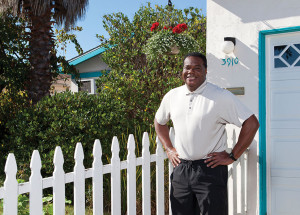Not everything you need to know about school librarianship is taught in graduate school. No matter how comprehensive the training for school library certification is, there are a few aspects of teaching that may still surprise you. What follows is a top 10 list of what to expect as a newbie school librarian—areas in which you may have little training, despite colleagues’ assumptions that you, the rookie, have mastery.
Number 10: Assume the best. With the exception of Montana, every state in the union has passed antibullying legislation since 1999. These laws mandate teachers to report incidences of bullying, intimidation, and harassment. While this may seem logical, new teacher librarians may not always find it easy to understand the developmental idiosyncrasies of student interactions. Distinguishing bullying from other behaviors can prove challenging, and overreporting can undermine collegial partnerships and students’ receptiveness to library services.
Number 9: Be flexible. Most flexibly scheduled school librarians do not have access to special education students’ individualized education plans and therefore are often unfamiliar with these students’ diagnoses and recommended accommodations. But in inclusive instructional settings, school librarians teach all students, sometimes with limited support from special education teachers. Although this is beginning to change, too many K–12 librarians still have to intuit students’ instructional and socioemotional needs and then modify lesson plans.
Number 8: Set measurable goals. Incentivized by the Race to the Top federal education grant program, teacher evaluation are, in many instances, based on student achievement on standardized tests—tricky business for a teacher librarian. Although studies demonstrate the positive impact of one or more school librarians on achievement, teacher evaluations require school librarians to provide a measurable correlation between their work and their students’ success. This requires careful planning, goal setting, and pedagogical work.
Number 7: Build community. Seldom is there more than one school librarian assigned to a given building. Cultivate a professional learning community within and beyond your district to offset that isolation.
Number 6: Master the standards. Learn standards such as Common Core State Standards, American Association of School Librarians’s Learning For Life, the International Society for Technology in Education’s National Educational Technology Standards, and the Partnership for 21st Century Learning—all critical in K–12 education. Most states also have their own standards, and districts have their own curricula. School librarians who develop expertise quickly emerge as district leaders.
Number 5: Publish and flourish. Those who share online what they learn, as well as what their students are accomplishing, are likely to earn recognition and build stronger partnerships.
Number 4: Promote and protect. School librarians are expected to embed digital citizenship, profile management, and online safety into the core curriculum. Promote your programs through participatory platforms like Facebook, YouTube, and Twitter effectively models sound profile management practices for learners.
Number 3: Connect learners. Twenty-first-century learning calls for communication, collaboration, creativity, and critical thinking. When school librarians connect students with other learners, teachers, and experts, they give students a chance to hone those skills.
Number 2: Be the solution. New school librarians know they are instructional partners, but until teachers perceive the them as facilitators, they will tend to refrain from collaborating at all. Establishing relationships can be slow and frustrating work for a rookie librarian.
Number 1: Balance the old and the new. Some traditional responsibilities—cataloging, for example—are more important than ever in the digital landscape. Of course, there are also new responsibilities—also driven by technological innovation, such as helping teachers find the right tool for an instructional objective—that are now part of school librarians’ workload.
MICHELLE LUHTALA is school librarian for New Canaan (Conn.) High School. DAN AMBROSIO was a student librarian and intern at New Canaan High School while earning his master’s of arts in educational technology and school library certification from Fairfield (Conn.) University.


